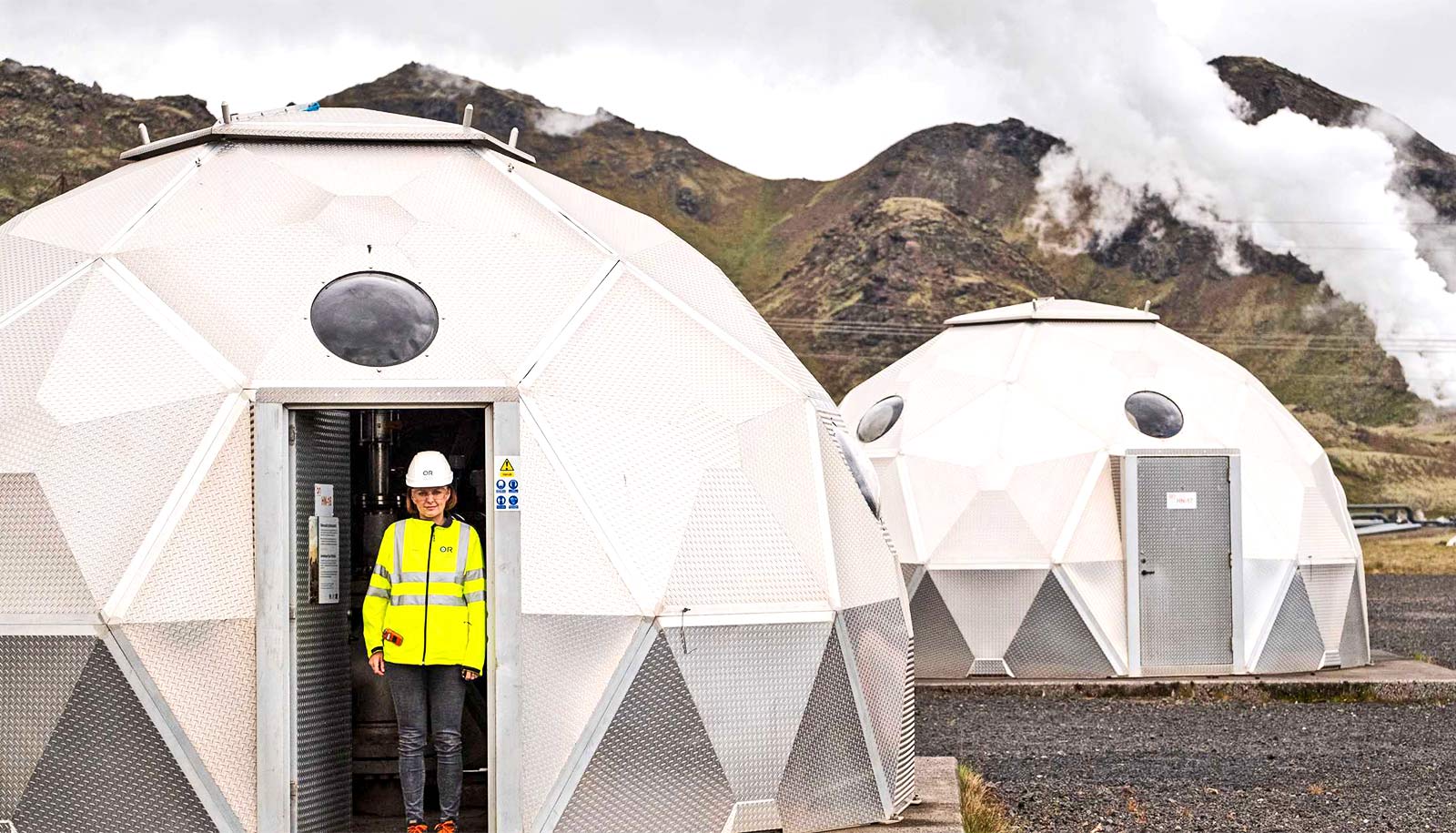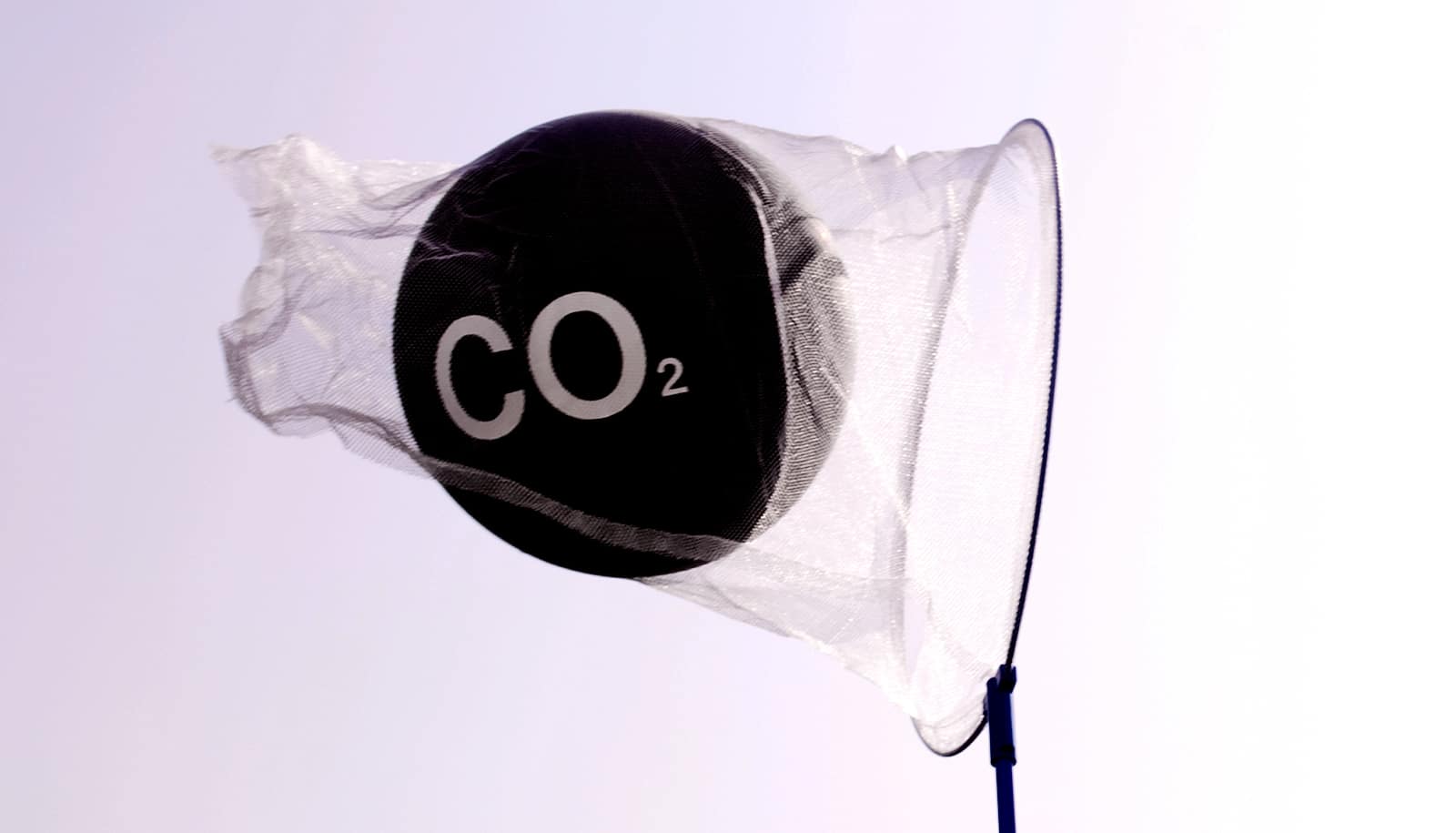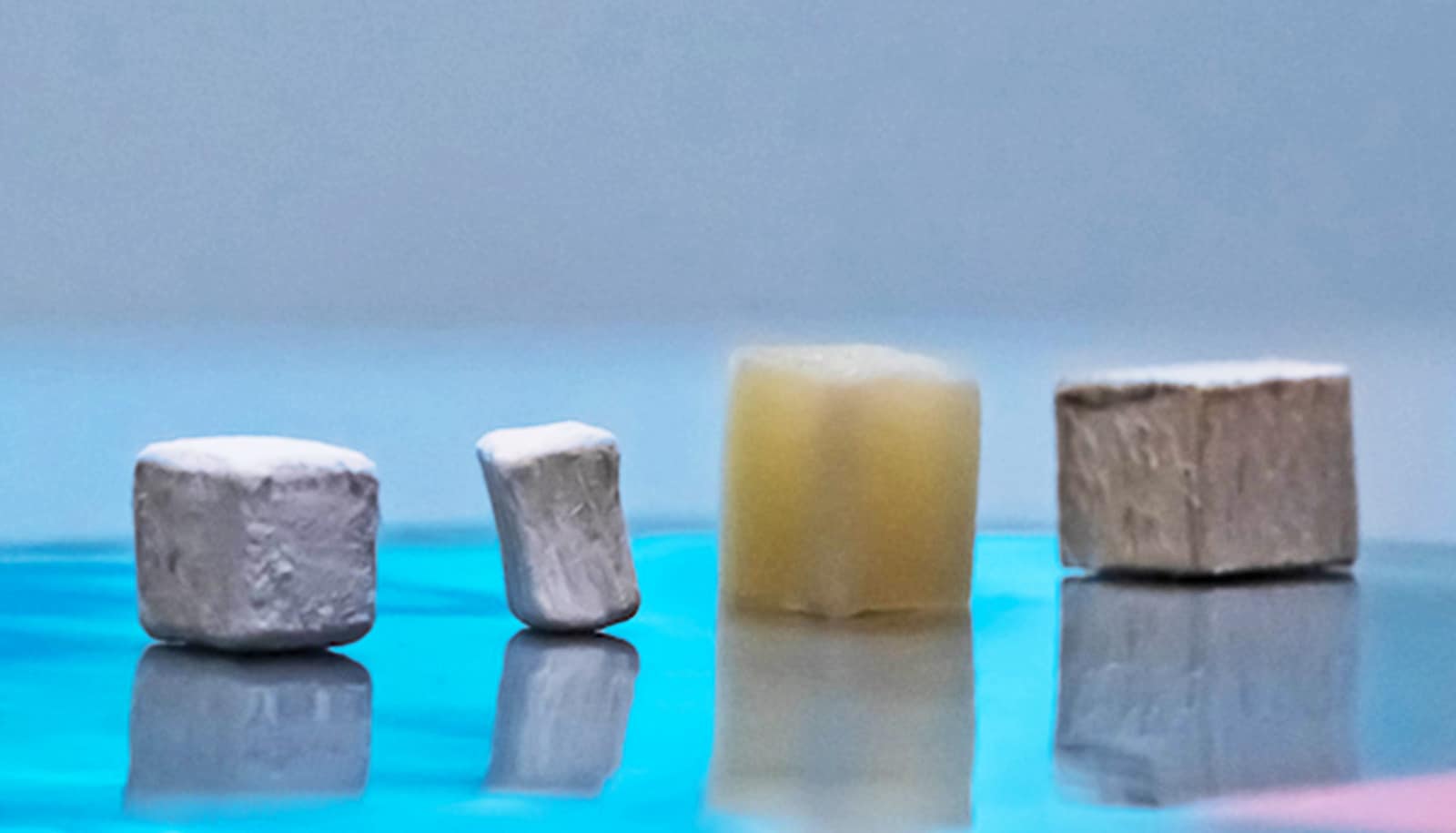
Carbon dioxide captured and liquefied in Switzerland is being injected underground for permanent mineralization at its existing wells by the geothermal power plant in Hellisheiði, Iceland. (Credit: Carbfix)
What’s the best way to store carbon dioxide?
Capturing and storing carbon dioxide in recycled concrete aggregate or geological reservoirs is feasible and has a positive carbon footprint.
Capturing carbon dioxide from the atmosphere and storing it in recycled concrete aggregate or geological reservoirs in Iceland is technically feasible and also has a positive carbon footprint, a new study shows.
Switzerland has set itself an ambitious goal: to reduce the country’s greenhouse gas emissions to net zero by 2050. But this will require more than just a massive expansion of renewable energies and saving measures.
The federal government assumes that hard-to-abate CO 2 emissions, e.g. from incineration plants, will amount to 12 million tonnes (about 13.2 million tons) a year. Some of the CO 2 emitted therefore needs to be removed again from the atmosphere. The question is, how? And what should be done with it?
Researchers investigated these questions as part of a pilot project and explored two solutions for permanent storage of CO 2 :
- Mineralization in recycled demolition concrete manufactured in Switzerland and
- Mineralization in a geological reservoir in Iceland.
The project used carbon dioxide emissions from a waste water treatment plant in Bern. The researchers performed a life cycle analysis that covered the entire chain—from the capture and liquefaction of CO 2 at the point of origin, to its transport and permanent storage. They also calculated how much new CO 2 is produced along the entire chain. In addition, they explored different solutions for carbon capture methods and technologies for a waste incineration plant and a cement manufacturing plant.
The project demonstrated that both pathways are technically feasible and have a positive climate impact. In all the examples examined, the amount of CO 2 stored exceeded the emissions produced along the transport chain.
When storing in recycled demolition concrete, the efficiency and thus the ratio between stored emissions and resulting new emissions is 90%; when transporting Swiss CO 2 and then storing it in a geological reservoir in Iceland, it’s around 80%.
This efficiency should improve in future as most of the new emissions arise from transporting the containers by rail and ship, and some of these modes of transport still use energy from coal-fired power stations as well as fossil fuels. If in future CO 2 is to be exported on a large scale, constructing a pipeline would be a potential solution.
One aspect that did surprise researchers, on the other hand, was the regulatory difficulties encountered when trying to transport CO 2 through several countries to Iceland. This was the first instance of cross-border carbon dioxide transport for storage.
“A lot of CO 2 is needed in the food production industry, and can be transported across borders without any problem, labelled as chemicals. But if the carbon dioxide is in the form of waste—as in our case—the regulatory environment is very unclear,” says Marco Mazzotti , project coordinator and a professor at ETH Zurich.
The project team therefore came to the conclusion if Switzerland wants to store CO 2 on a large scale and create incentives for companies in future, it needs to work with its European neighbors to agree on clear regulations.
Even though the technologies trialed in the project function correctly, much research is still needed in the area of CO 2 management. It is also vital to make sure the technologies are worked up to a commercial scale.
In 2023 ETH Zurich researchers and partners in politics, science, and industry, set up the Coalition for Green Energy and Storage, one of whose aims is to accelerate the adoption and roll-out on an industrial scale of existing technologies for capturing CO 2 , producing carbon-neutral gases and fossil fuels, and permanently storing CO 2 .
Another question researchers are addressing is whether CO 2 can also be stored underground closer to home, in Switzerland. A possible injection test in a borehole in Trüllikon no longer required by the National Cooperative for the Disposal of Radioactive Waste (NAGRA) could provide some initial answers.
Source: ETH Zurich
The post What’s the best way to store carbon dioxide? appeared first on Futurity .
Share this article:
This article uses material from the Futurity article, and is licenced under a CC BY-SA 4.0 International License. Images, videos and audio are available under their respective licenses.
Related Articles:
Carbon capture might not be such a great idea
Oct. 28, 2019 • futurityEngineered wood gets stronger while trapping CO2
Feb. 23, 2023 • futurityLinks/images:
- https://www.futurity.org/polar-bear-survival-greenhouse-gas-emissions-2969332/
- https://www.futurity.org/co2-plans-emissions-2907592-2/
- https://www.futurity.org/biodegradable-plastics-pla-812952/
- https://www.futurity.org/coal-power-health-effects-1988742/
- https://www.futurity.org/diets-most-emissions-2882902/
- https://istp.ethz.ch/people/person-detail.mmazzotti.html
- https://www.futurity.org/carbon-dioxide-gas-solid-underground-2823242/
- https://ethz.ch/en/news-and-events/eth-news/news/2023/12/what-should-be-done-with-all-the-co2.html
- https://www.futurity.org/carbon-dioxide-storage-3007012/
- https://www.futurity.org


